Ever wondered how to enhance your maple wood’s natural beauty while ensuring its durability? Discover the magic of using Tung oil on maple!
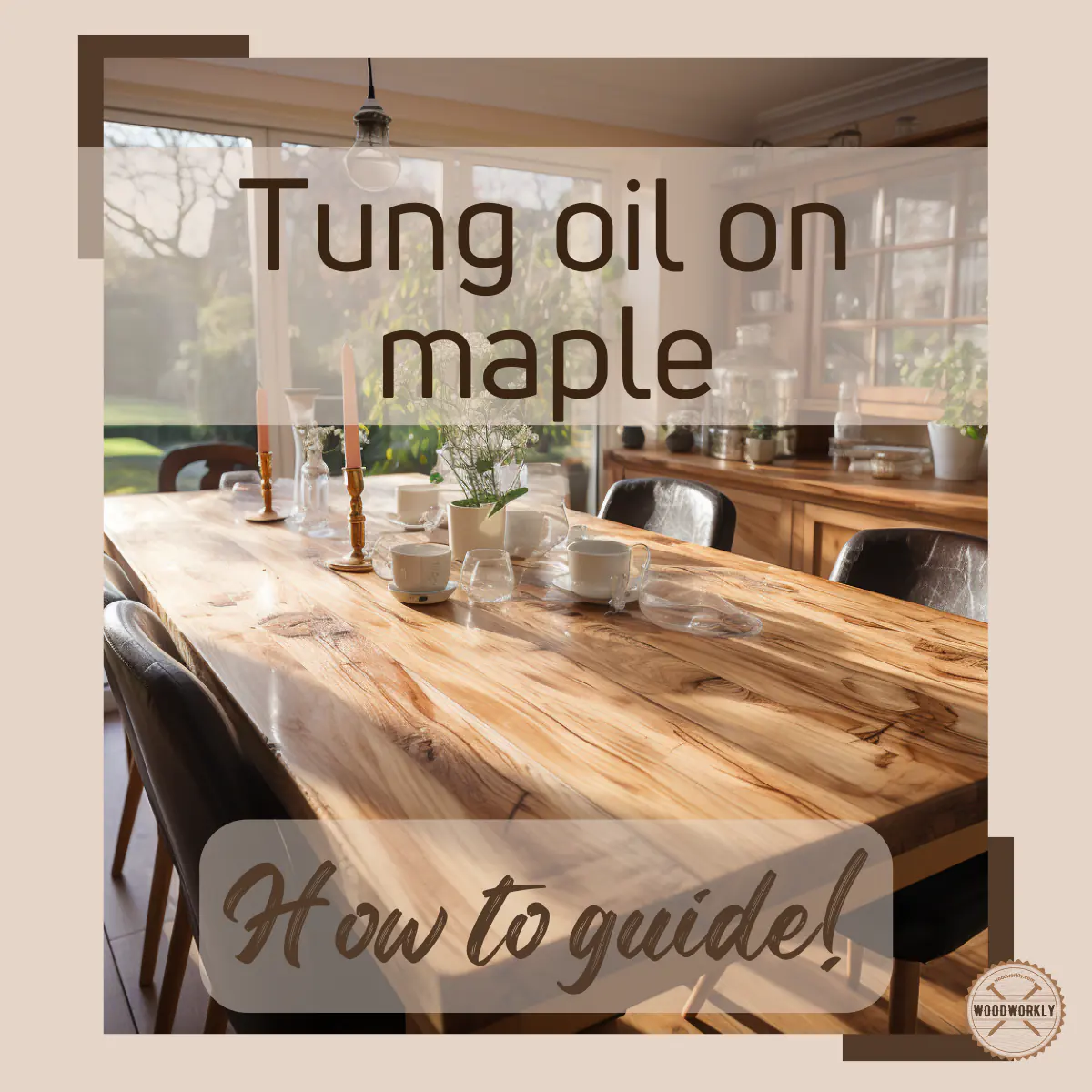
Maple is a popular choice for high-end furniture making.
These days, many people prefer to use oil finishes on their maple furniture because it’s easy to apply and eco-friendly.
Tung oil is one of these preferred finishes. When I was applying Tung oil to my maple wood furniture, I was curious about how it would interact with the wood to provide the perfect finish.

I sought advice from wood finishing experts and gathered extensive details on how to achieve the best results when finishing maple wood with Tung oil, including various tips and techniques.
So, let’s learn about using Tung oil on maple,
Tung oil enhances maple wood’s natural beauty, offering a clear, durable finish. It penetrates deeply, providing water resistance and protection against environmental damage without darkening or yellowing the wood. Apply 4-5 coats for optimal results, allowing each to dry thoroughly. Suitable for both indoor and outdoor maple furniture and woodwork.
But that’s just a quick snapshot!
In this article, I’ll explore whether can you use tung oil on maple and how to finish maple wood using Tung oil using the right technique.
Furthermore, I’ll answer some frequently asked questions as well.
So, let’s jump in!
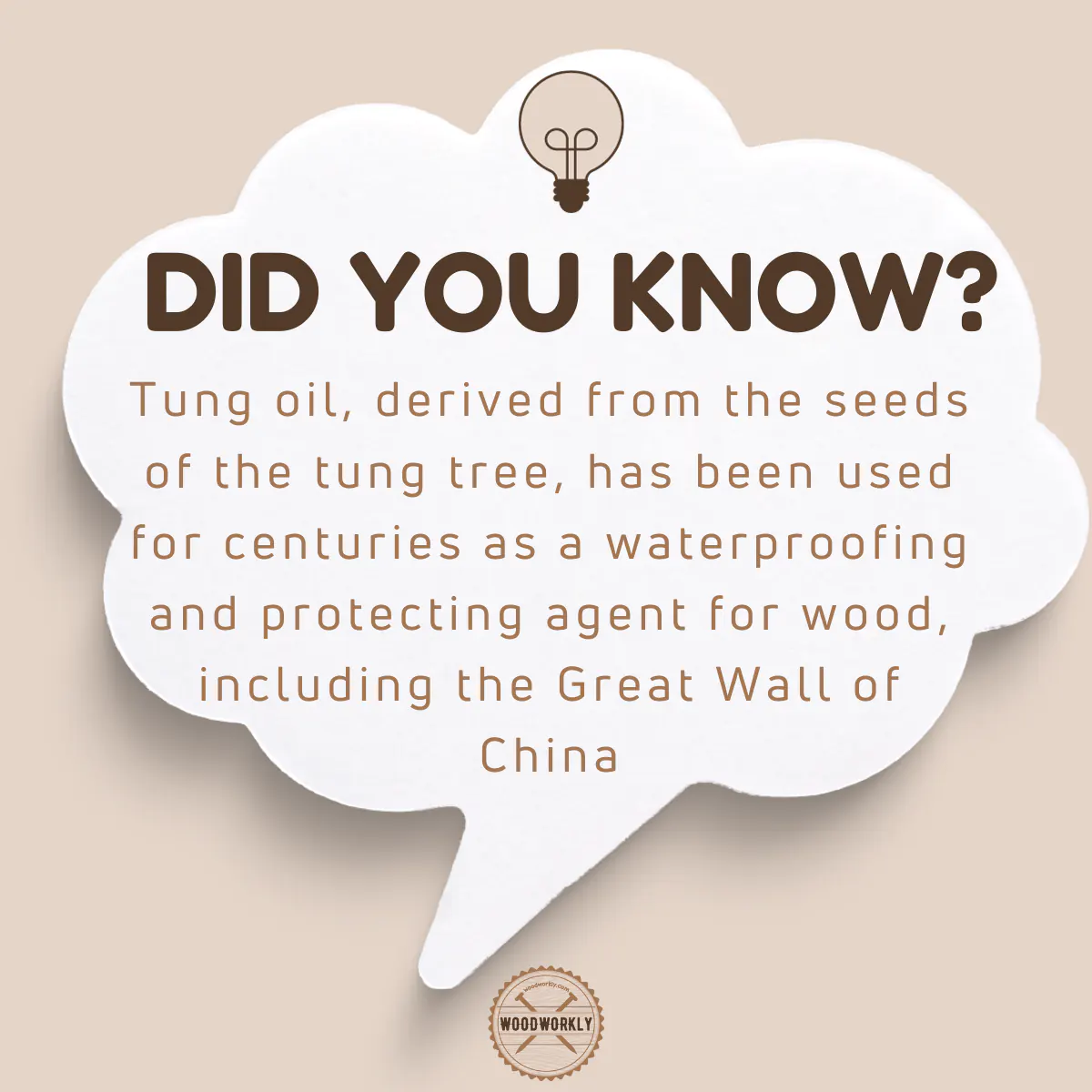
Can You Use Tung Oil On Maple?
Yes, Tung oil works perfectly on maple wood since Tung oil penetrates so well because of its straight grain structure and improves wood flexibility.
Then it will make a protective coating over maple wood against moisture and other environmental elements.
Tung oil coat protects maple wood from moisture, cracks, splits, rotting, and many other environmental impacts.
Plus, Tung oil improves the dark brown wood color of maple wood by giving a wet fresh look to the wood.
Because of the tight and dense grain structure of maple wood, Tung oil soak into the wood quickly and difficult to get an evenly spread finish.
Therefore, I’ll have to wipe Tung oil liberally using proper finishing techniques to finish maple wood without making a mess.
Tung oil hardens on the maple wood surface after application upon exposure to atmospheric oxygen.
It will make a protective coating over the maple wood surface as a result of a chemical reaction between oxygen and Tung oil elements.
Once you apply Tung oil over maple, Tung oil coats prevent maple wood from contacting the outside world.
Because of minimizing the interactions with the outside world, maple wood doesn’t make irregular wood movements and that helps to increase the wood’s stability.
Plus, properly applied Tung oil prevents wood from warping and twisting under climate changes.
Overall, Tung oil increases the durability of maple wood furniture and other woodwork to keep them so long with extra protection from the outside world.
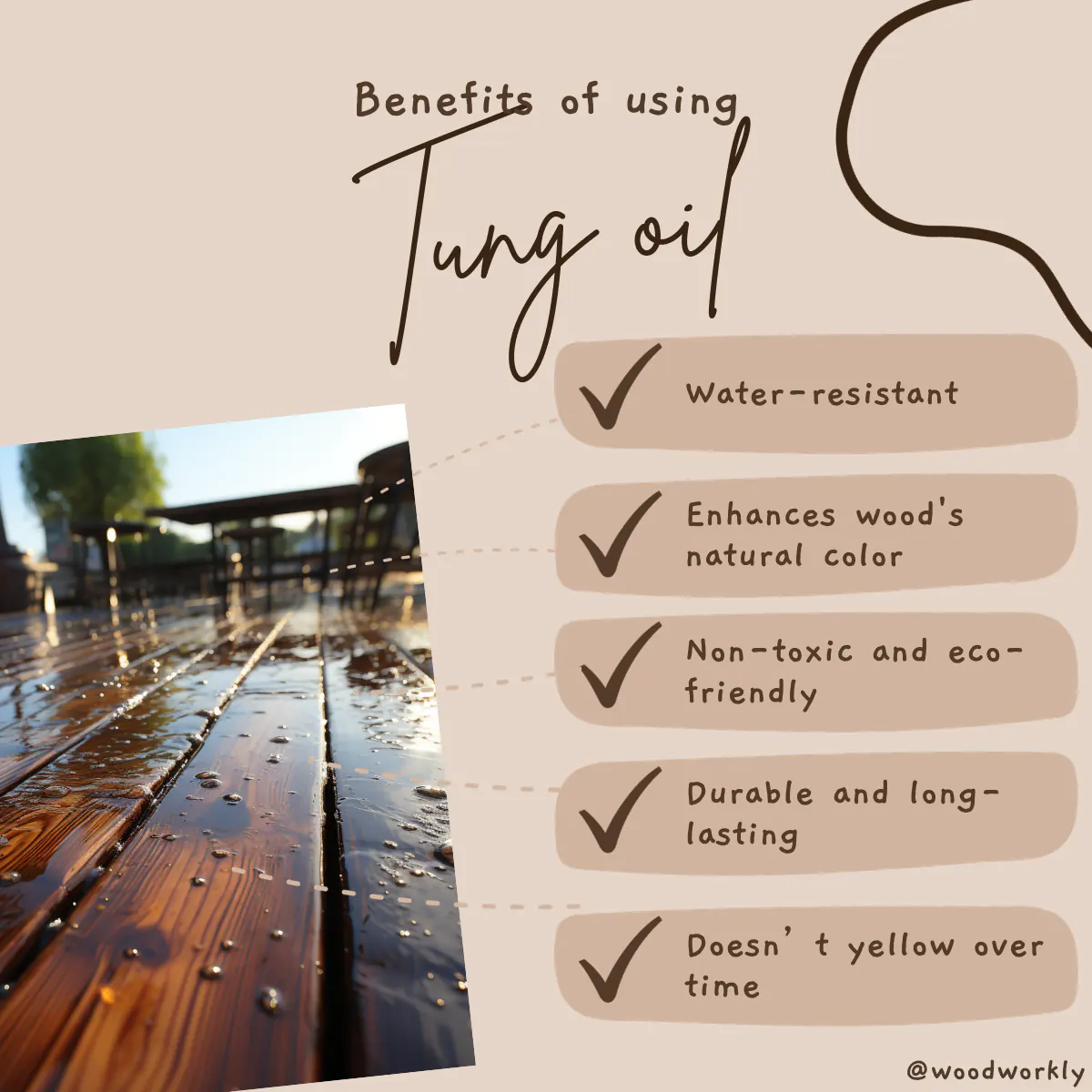
Tung oil on Maple Uses
Tung oil is mostly used for,
- Maple high-end furniture
- Maple cabinets
- Maple wood floorings
- Panels
- Window frames
- Doors
- Maple patio furniture
- Maple wood carvings
As you can see Tung oil can use for any maple wood indoor and outdoor furniture.
You just have to follow the correct procedure during the application process because maple soaks up Tung oil like a sponge.
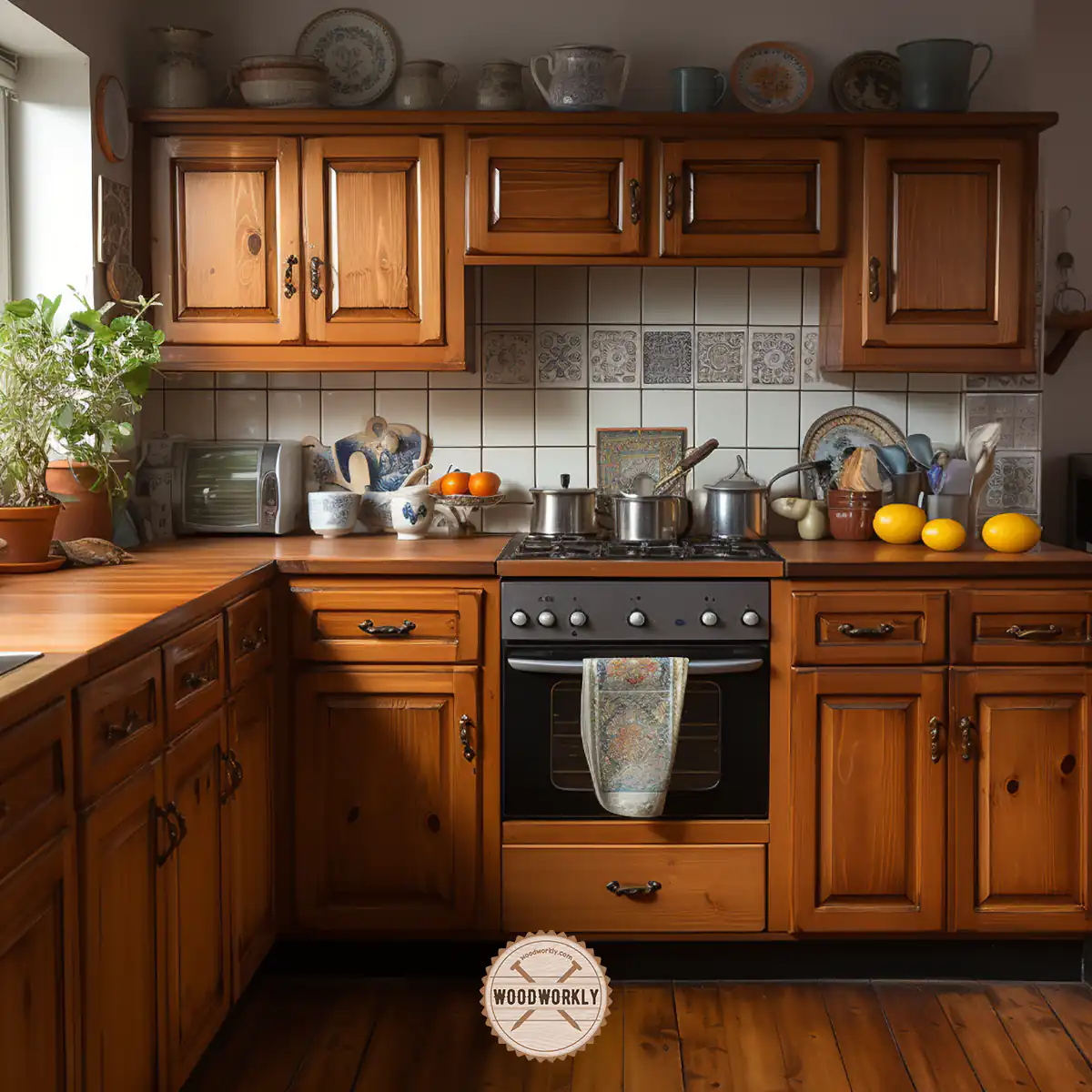
Advantages Of Using Tung Oil On Maple
- Tung oil protects maple wood from water damages
- Tung oil enhances the maple wood color
- Tung oil is non-toxic
- Eco-friendly finishing
- Tung oil is easy to apply
- Tung oil doesn’t yellow over time
- Improves the wood flexibility
- Tung oil is food safe
- Prevent maple wood from dents and scratches
Maple wood is a sensitive element that changes dramatically along with environmental changes.
For example, maple wood tends to shrink under highly humid environments and expand under low humidity levels.
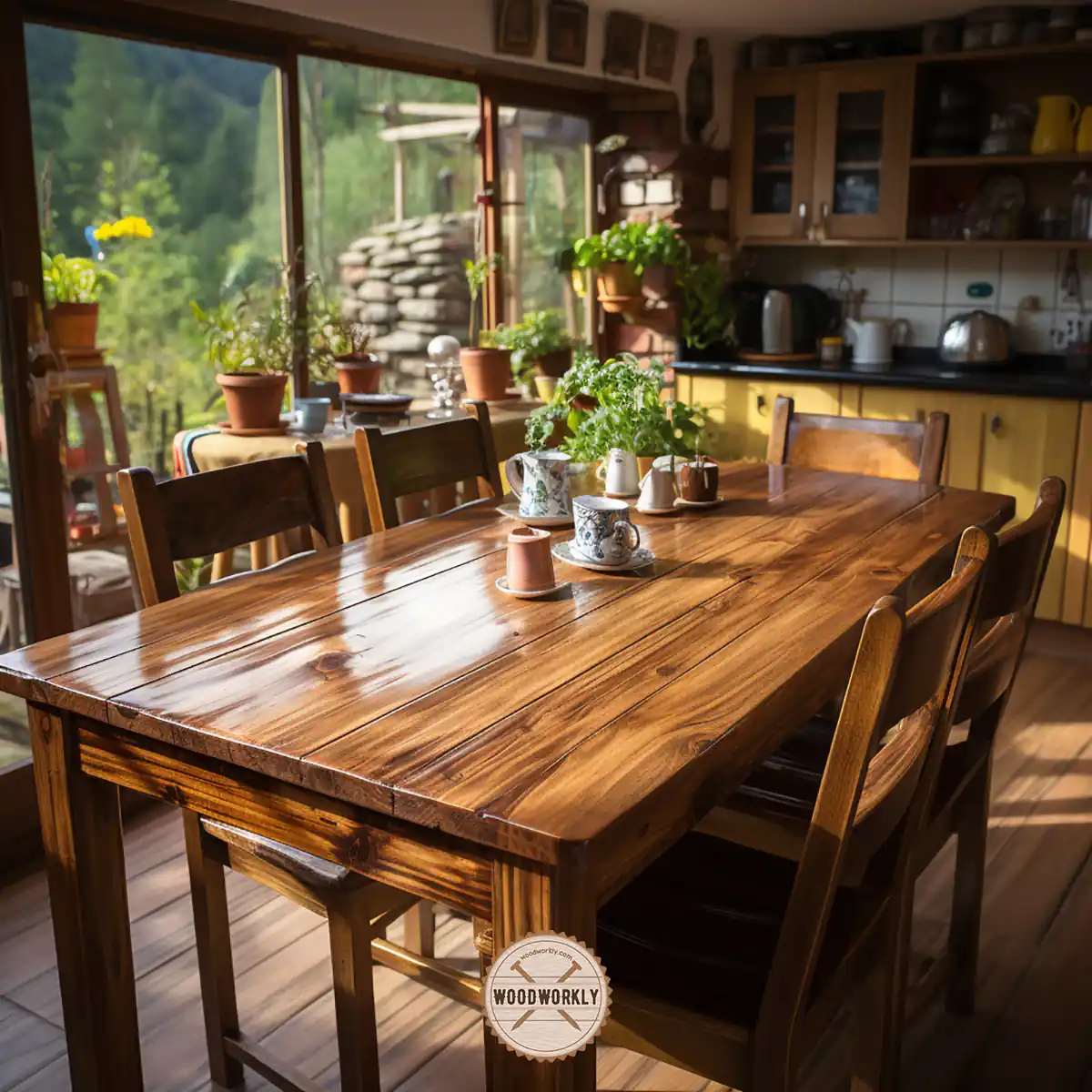
Plus, maple wood fibers expand due to thermal expansions under high-temperature levels.
But after applying Tung oil, Tung oil coats moisture evaporation from maple wood under low humidity levels to balance the moisture levels inside and outside.
Therefore, maple wood won’t shrink even under low humidity.
Same as, in high humidity levels, Tung oil coats prevent moisture from penetrating the wood inside.
This will prevent wood expansions under high humidity levels.
Overall, Tung oil is one of the best finishing products for maple wood which can protect the wood in the long run while providing a clearer finish with a beautiful appearance.
Read to know more about, Tung oil advantages and disadvantages.

So, let’s have a look at how to apply Tung oil on maple properly to get a perfect finish as you wish.
Supplies You Will Need to Finish Maple Wood with Tung Oil
- Tung oil (Pure or dark)
- Maple wood
- Mineral spirit
- Sandpapers (120 grit, 150 grit, and 220 grit)
- Abrasive finishing pads
- Tack cloth
- Rags
- Plastic cup or glass jar
- Measuring cup
- Plastic stick or stirrer
- A bristle brush, sponge brush, or lint-free soft cloth
- Latex gloves
How To Apply Tung Oil on Maple?
Applying Tung oil on maple is not easy as Tung oil on cedar or pine.
Because maple wood has a tight dense grain structure that absorbs Tung oil like a sponge and you’ll have to be quick and well-focused during the process to get the look you want.
There’re several ways you can apply Tung oil to maple. They are,
- Apply Tung oil using a bristle brush
- Spray Tung oil after mixing with mineral spirit
Apply Tung oil using a bristle brush is the easiest method to follow because the spraying method takes a lot of time and effort.
Here’re the steps you need to follow when applying tung oil finish on maple,
- Prepare maple wood surface
- Thin Tung oil with mineral spirit
- Apply first coat
- Let it dry and sand lightly
- Apply more coats
- Let the oil dry and cure properly
So, let’s discuss each of the above steps in-detail to get a clear idea about applying Tung oil to maple with ease.
1. Prepare Maple Wood Surface
Before heading into the application process, you’ll have to bring maple wood furniture or woodwork to a well-ventilated area since good air circulation is great for efficient drying and minimizing respiratory issues during the application process.
First, you need to clean the entire maple wood surface with rags and cloths to remove dust, debris, grease, and other residues.
Proper cleaning is a must before finishing because dust particles give a dull appearance and reduce the performance of the finishing coat providing a blotchy surface.
Check for any exciting finishing coats on maple wood and make sure to remove those remaining finishers using sandpapers before starting the application process.
Use Tri-sodium phosphate to remove dirt, dust, and other residues that are difficult to remove by wiping with rags.
After cleaning the wood properly, sand the entire maple wood surface first with 120 grit sandpaper and then with 150 grit to eliminate surface randomness, and bumps and make the surface smooth.
Sand along the direction of the wood grain to open the pores structure of maple wood and to prevent the wood from scratching.
Sand with even pressure all over the wood to get even looking finishing coat.
Tip:
Wet sanding is recommended with 220-grit sandpaper for a super smooth surface. Wet the surface using a spray, let it dry, and sand lightly with 220 grit sandpaper.
Once you’re done with sanding, check the maple wood surface carefully to identify missing spots. Then do the sanding again for those spots.
After sanding removes sawdust and other residue using a proper dust collection pipe system or wipes off using clean rags.
Now your maple wood surface is ready to accept Tung oil perfectly with a super smooth finish.
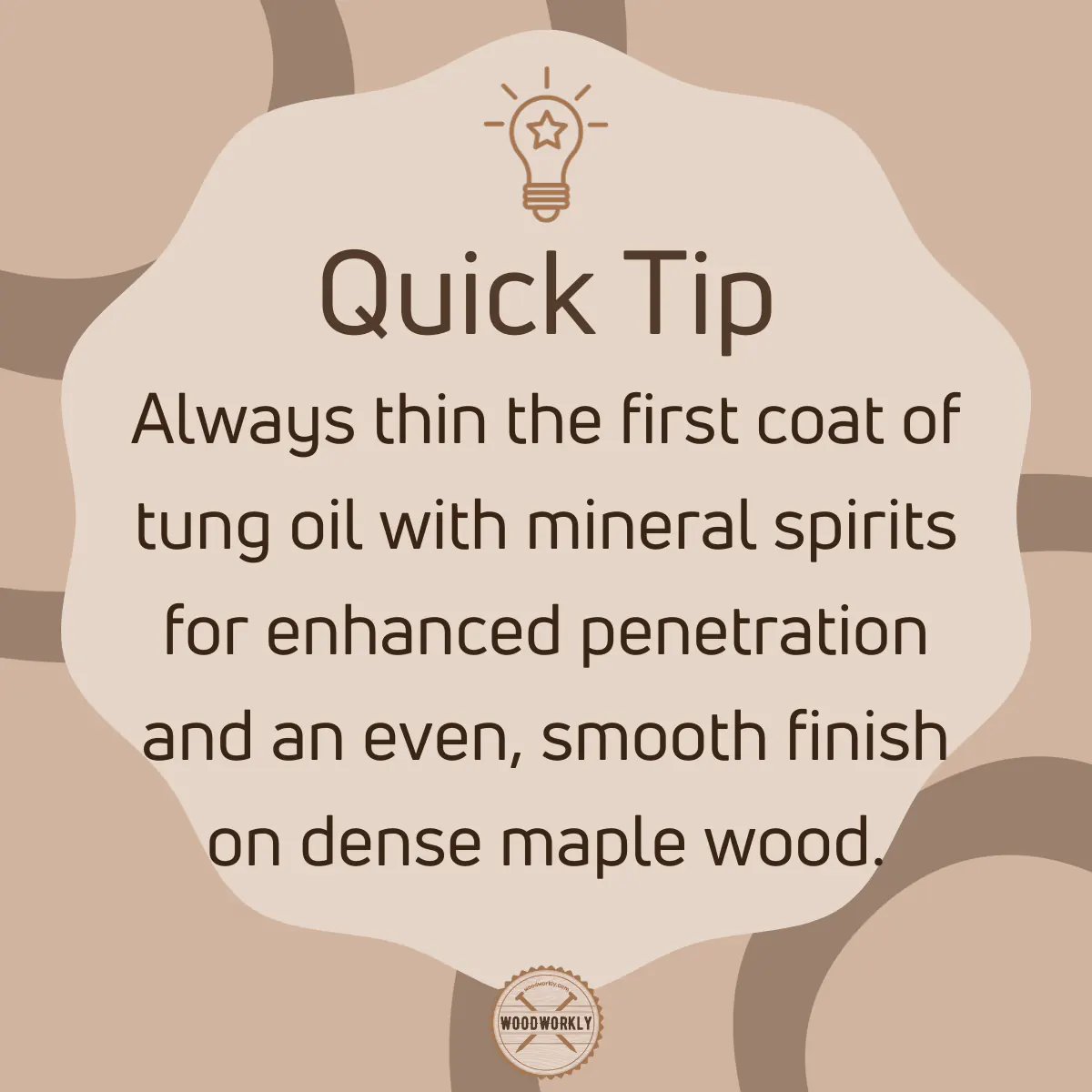
2. Thin The Tung Oil With Mineral Spirit
Thinning Tung oil is recommended to get a super smooth clearer finish with an evenly spread coating.
Applying Tung oil directly on maple is difficult because maple absorbs Tung oil quickly and is unable to spread evenly all over the wood.
Thinned Tung oil with mineral spirit improves the adhesive properties of the first coat and that helps the next coat of Tung oil to stick well with the previous one, by making one thin layer with no separation.
Therefore, only the first coat of Tung oil is required to thin with mineral spirit. The final coat is fine to apply without thinning.
First, you need to have a clear idea about how much Tung oil you need to use for the first coat to cover up the entire maple wood surface.
Follow the below steps carefully to thin Tung oil with mineral spirits,
- Take the necessary amount of Tung oil into a measuring cup for the first coat
- Pour Tung oil into the glass jar or plastic cup
- Add an equal amount of mineral spirit into the glass jar or plastic cup
- Mix them slowly without forming bubbles
Tip:
Make sure to purchase regular mineral spirit products from local stores. Because ones that are marked as eco-friendly or green aren’t suitable for mixing with Tung oil for thinning.
3. Apply the First Coat Of Tung Oil
Take a bristle brush or tack cloth and dip it lightly in the thinned Tung oil and apply the first coat of Tung oil all over the maple wood surface.
Apply Tung oil generously, evenly, along the direction of the maple wood grain to absorb Tung oil well without missing any spots.
Applying along the wood grain helps for better absorption without getting splotchy or tacky surface.
As soon as you touch the first coat of Tung oil on the maple wood surface, the oil will soak deep into the wood quickly.
Tung oil will saturate the maple wood fibers and improve the wood’s flexibility to prevent the wood from cracking.
Not like varnish or lacquer, Tung oil doesn’t sit directly on the surface. Once the wood fibers are saturated with the first coat of Tung oil, you’ll be able to make a clear coat of maple wood from the second coat onwards.
After applying the first coat of Tung oil on the maple, check for puddle areas and remove them by wiping them with a soft cloth.
Puddles areas give an unpleasant appearance to your maple wood furniture.
After applying the first coat, let the maple wood be saturated for another 30 minutes and wipe excess oils and bubbles before the oil settles on the surface.
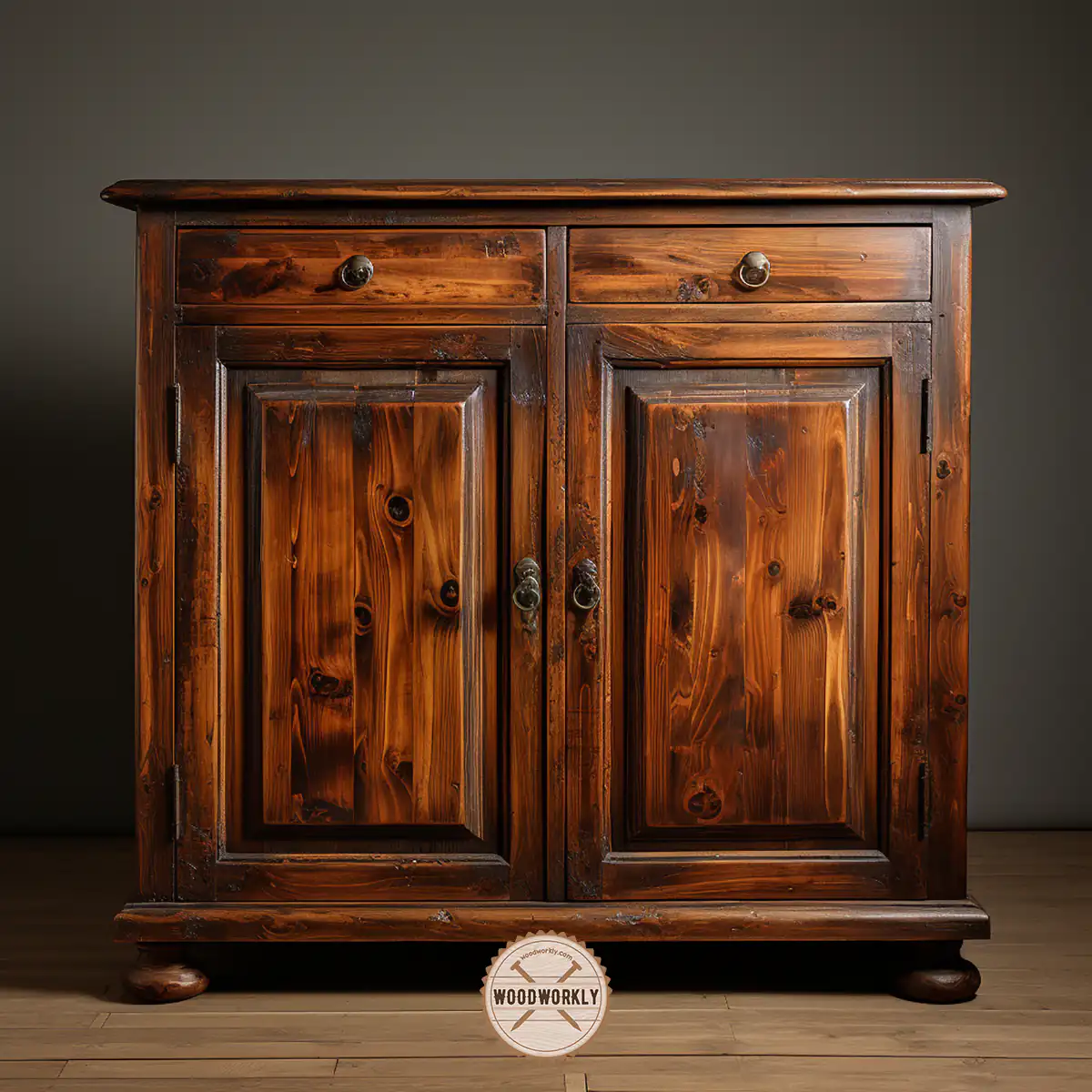
4. Let It Dry and Sand The Surface Lightly
After applying the first coat of Tung oil on the maple wood surface, let the coat dry and cure for about 6 hours.
Don’t apply the next coat of Tung oil before the previous one dries completely. Otherwise, you’ll end up with never drying tacky surface.
Once the first coat of Tung oil dries completely, sand the entire surface lightly with fine 320-grit sandpaper or abrasive pads to remove drips, runs, nibs, and flaws and make the surface super smooth and clear.
Sanding between Tung oil coats helps to bond the next coat well onto the previous coat’s surface with good adhesion without separation.
Do not sand the coat before it dries. Drying wet surfaces clog up the sandpaper and scratch the surface.
Steel wool also works fine when sanding between coats.
Once you’re done with sanding, Wipe and clean the surface to remove residue.
5. Apply More Coats Of Tung Oil
Now you can start to apply the second coat of Tung oil to the maple wood. you don’t need to thin the second coat of Tung oil because the surface is well prepared to take more Tung oil coats after the first thinned coat.
Apply the second coat of Tung oil on the maple wood surface using the same technique you used for the first coat along the direction of the wood grain.
Wipe off the excess and make a clear evenly spread Tung oil coat in the end.
Repeat the same procedure and apply up to 4 – 5 coats of Tung oil on maple wood. make sure to apply thin coats of Tung oil for fast drying and better absorption. Application time is around 10 minutes.
Tips:
- Wipe the excess amounts of oils, drips, and runs during the application using a clean rag before they are set.
- Apply thin coats of Tung oil for better drying and curing process
- Noticing dull areas after the second or third coat is pretty normal. Those dull areas will varnish once the final coat of Tung oil is cured properly
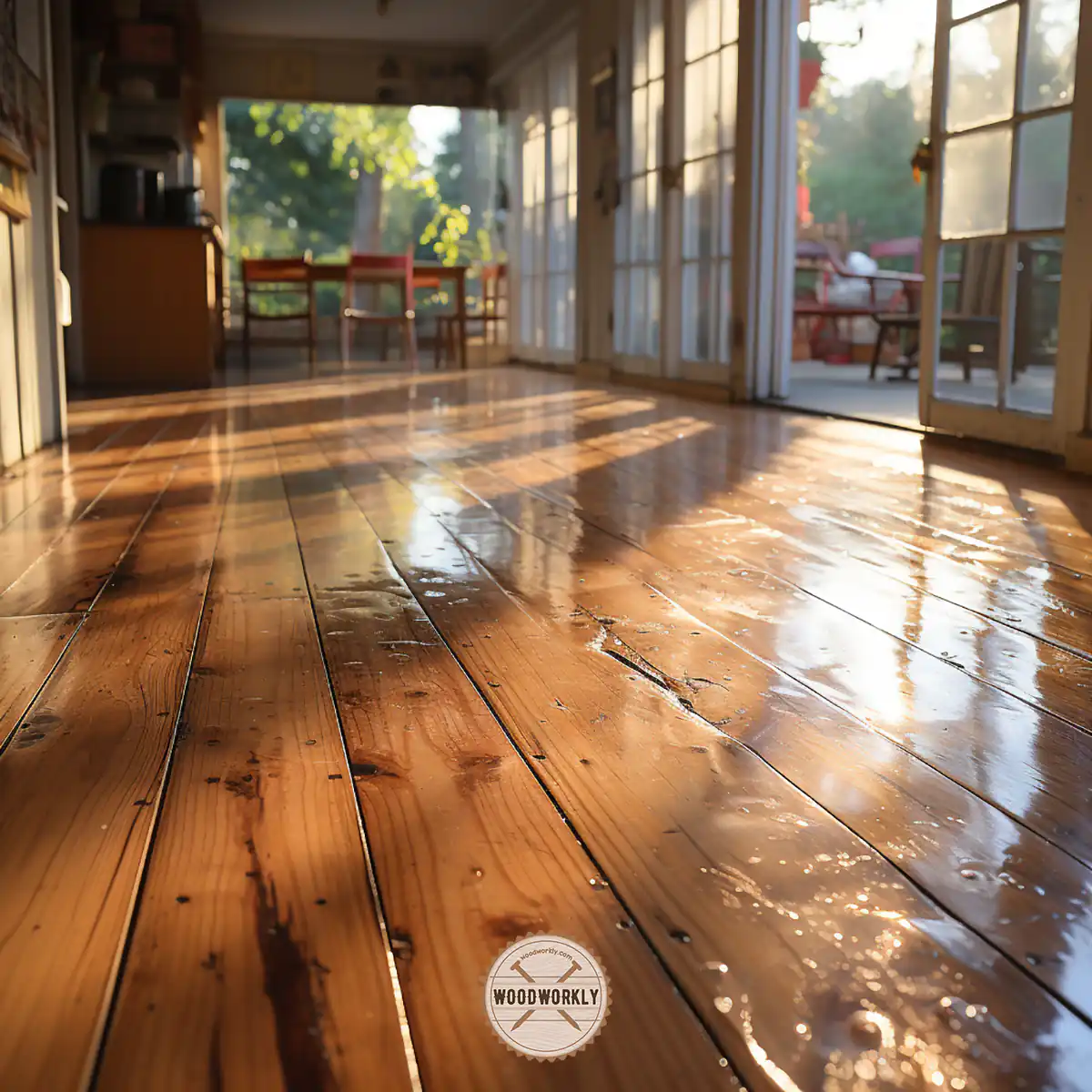
6. Let The Tung Oil Dry And Cure Completely
After applying each coat of Tung oil to the maple, let it dry for 6 hours. I recommend you dry overnight for efficient drying with no issues.
Drying is important to make the finish clearer, and smooth and to absorb the next oil coat more evenly without forming ugly blotches.
After the final coat of Tung oil let it cure for 14 days. Yes, it’s pretty long because usually, oil finishes take a lot of time for the curing process.
During the curing period of 14 days, Tung oil will color up the maple wood and give beautiful rich dark brown color evenly.
Plus, a super-strong protective layer of Tung oil will build up during the curing period and that will help maple wood furniture stay fresh and awesome in the long run.
After 6 hours of drying, the Tung oil surface does not look sticky or tacky. But it takes around 14 days of curing to come up to a hard state.
Therefore, I highly recommend you keep maple wood furniture without using it for at least 14 days after finishing with Tung oil for better use.
That’s it, folks! Now you have a clear and in-depth idea about applying Tung oil perfectly on maple wood with the correct simple techniques.
Does Tung Oil Darken Maple?
No, Tung oil does not darken maple wood. Use dark Tung oil to make maple wood darker.
Pure Tung oil makes a clear finish on maple wood with enhanced wood color.
Plus, Tung oil does not yellow over time. you can keep your maple wood color look same for a long time by applying Tung oil because it doesn’t cause wood discoloration.
Read to know whether Maple wood darkens over time.
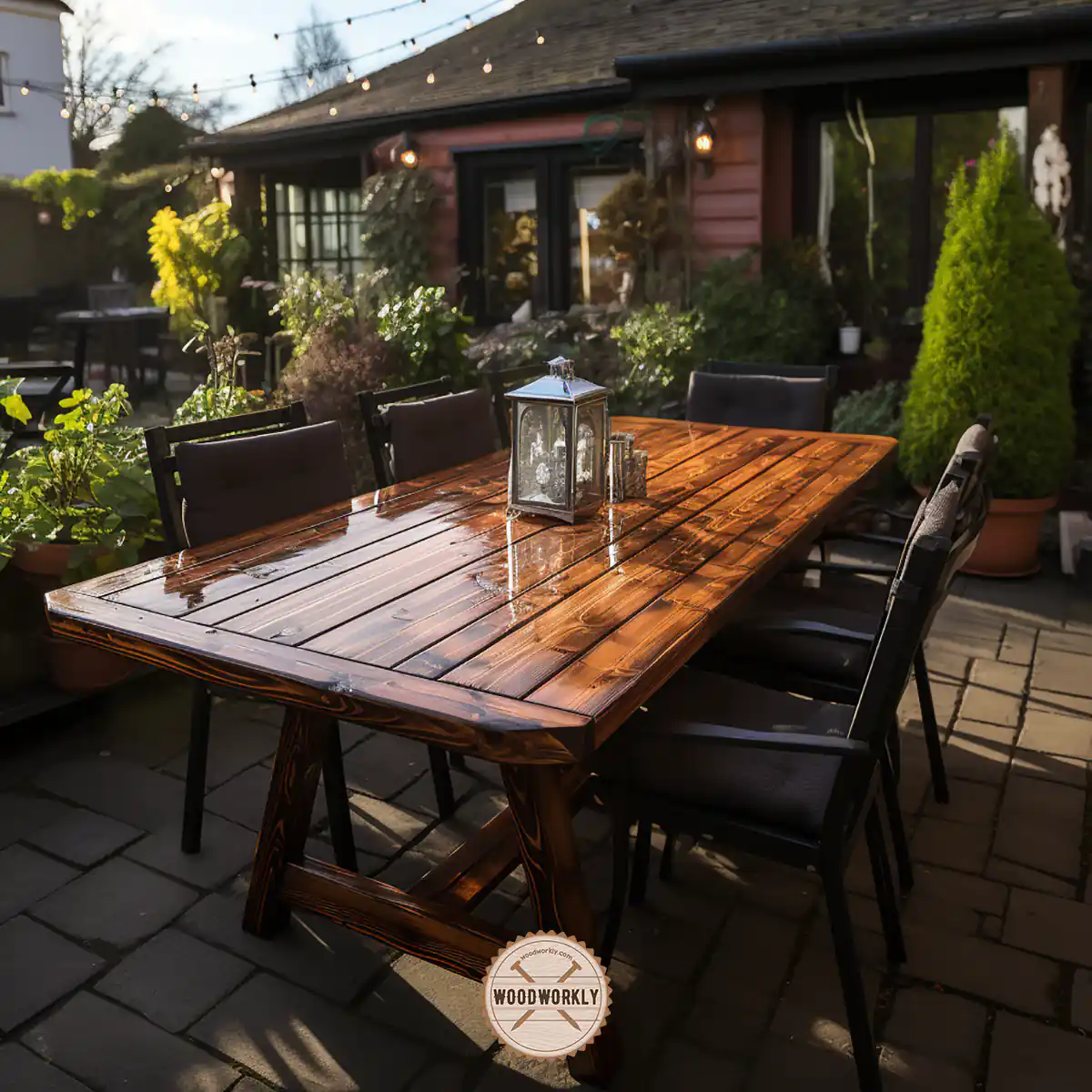
Does Tung Oil Turn Yellow?
Tung oil does not yellow like many other oil finishes.
You can keep Tung oil-finished furniture for a long time until they get a dull appearance to reapply Tung oil. But you won’t notice yellowing at all.
Best Oil For Maple Wood
- Minwax Tung oil finish
- Cabot’s Tung oil
- Real Milk paints dark Tung oil
- Hope Tung oil
How Many Coats Of Tung Oil?
Apply 4 coats of Tung oil on maple wood to get a protective finish with enhanced, enriched wood color.
Apply thin coats of Tung oil to get a clearer smoother finish.
Tung oil coats protect maple wood from moisture, rotting, decaying, and many other impacts. Let each coat of Tung oil dry for a minimum of 6 hours for an excellent finish.
Now I’m going to share with you some tips that I’ve learned by finishing lots of maple wood furniture using tung oil.
The below tips will make your maple wood finishing process a lot easier.
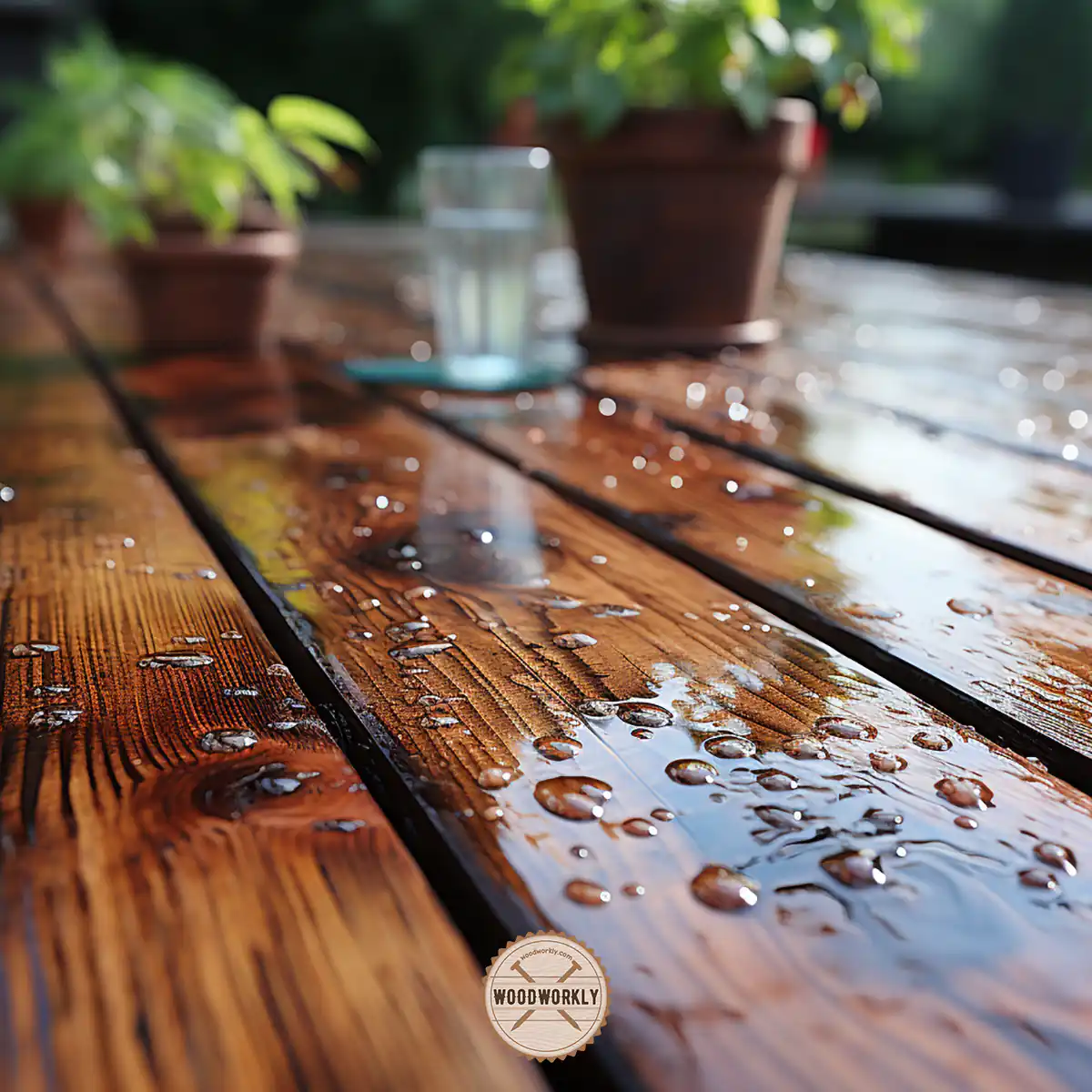
Tips for Using Tung Oil on Maple
Using tung oil on maple can be a rewarding experience that enhances the wood’s natural beauty and provides a durable, water-resistant finish.
Here’s a comprehensive guide with tips to get the best results when applying tung oil on maple.
1. Preparation is Key
Maple is known for its dense grain, making preparation essential.
Begin by sanding the wood with progressively finer grits of sandpaper to open the pores for better oil absorption.
Always sand in the direction of the grain to avoid scratches and ensure an even finish.
2. Use High-Quality Tung Oil
Choose 100% pure tung oil for a natural, durable finish.
Avoid oils with additives or those labeled “tung oil finish,” which might not provide the same level of protection and beauty as pure tung oil.
3. Consider Thinning the First Coat
Maple absorbs oil quickly; thinning the first coat with mineral spirits can facilitate easier and more even application.
However, ensure that you’re using genuine mineral spirits to avoid issues with consistency.
4. Application Technique Matters
Apply tung oil generously along the direction of the grain using a brush, cloth, or sponge.
Work in small sections, ensuring full coverage without leaving excess oil on the surface.
Wipe away drips and excess oil after allowing it to penetrate for about 30 minutes.
5. Drying and Curing Time
Allow each coat to dry for at least six hours, or preferably overnight. The oil should not feel tacky before applying the next coat.
After the final coat, let the oil cure for 14 days to ensure durability and the rich, warm glow characteristic of tung oil finishes.
6. Sand Between Coats
Lightly sand the surface between coats with fine-grit sandpaper or an abrasive pad.
This ensures better adhesion for the subsequent coat and eliminates imperfections for a smooth, flawless finish.
7. Maintenance
Though tung oil provides a durable finish, maintaining the wood ensures prolonged beauty and protection.
Clean the surface with a mild cleaner and consider reapplying a coat of oil when the finish begins to dull, depending on the wear and tear.
8. Safety First
Always work in a well-ventilated area, wear appropriate protective equipment, and follow safety precautions to avoid inhalation or skin contact with both the oil and mineral spirits.
9. Natural Beauty Enhancement
Tung oil enhances the natural color and grain of maple without the risk of yellowing over time.
For a darker finish, consider using dark tung oil varieties available in the market.
10. Consider the Environment
Tung oil is eco-friendly and non-toxic, making it a safe option for wooden kitchen utensils, countertops, and children’s furniture.
Ensure the oil is cured completely before using the finished items.
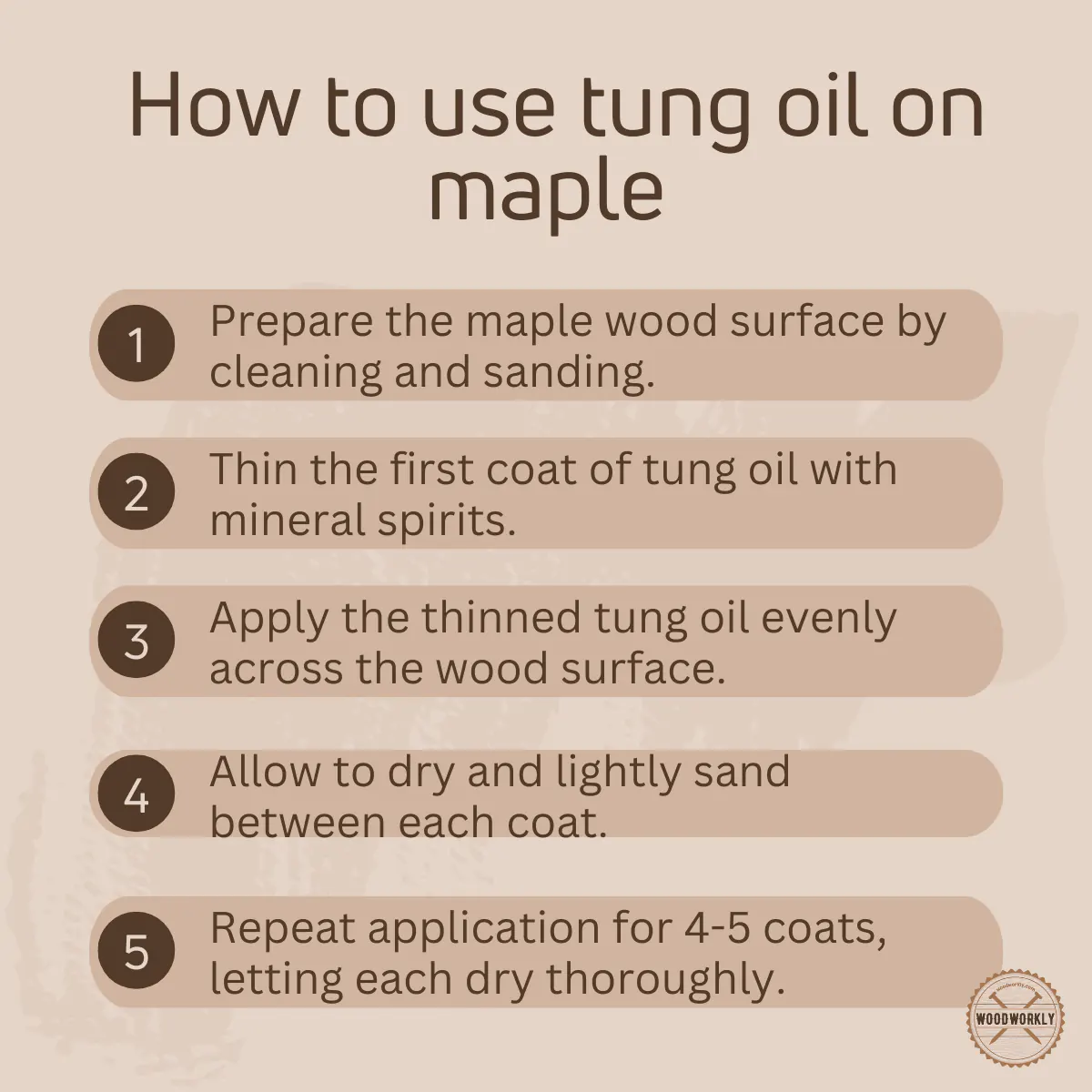
Let’s answer some frequently asked questions.
FAQs
Can I use tung oil on maple wood furniture?
Yes, tung oil can be effectively used on maple wood furniture. It penetrates the dense grains, enhancing the wood’s appearance and providing protection against environmental damage.
How many coats of tung oil are needed for maple wood?
Typically, four to five coats of tung oil are recommended for optimal results on maple wood. Each coat should be allowed to dry thoroughly before applying the next.
Does tung oil darken maple wood?
No, pure tung oil provides a clear finish that enhances but doesn’t darken the wood’s natural color. For a darker finish, dark tung oil variants are available.
Will tung oil turn yellow over time?
Tung oil maintains its clarity and does not yellow over time, ensuring that the wood retains its original color and aesthetic appeal for years.
Is it necessary to thin tung oil before applying it to maple?
Thinning the first coat with mineral spirits is advisable to ensure an even application and better penetration into the dense grains of maple wood.
How long does it take for tung oil to dry on maple?
Each coat of tung oil typically requires at least six hours to dry. The final coat should be allowed to cure for 14 days to ensure durability.
Is tung oil resistant to water and moisture?
Yes, tung oil creates a water-resistant barrier on maple, protecting the wood from moisture, cracks, and environmental impacts.
Can I use tung oil on maple kitchen utensils and countertops?
Absolutely, tung oil is non-toxic and food safe, making it a suitable finish for maple kitchen utensils and countertops once fully cured.
How do I maintain the tung oil finish on maple wood?
Maintenance involves cleaning the wood with a mild cleaner and reapplying a coat of oil when the finish starts to dull, depending on the usage and wear.
Is tung oil a durable finish for outdoor maple furniture?
Tung oil is resistant to mold, mildew, and fungi, making it a preferred choice for both indoor and outdoor maple wood furniture. Ensure adequate coats for optimal protection outdoors.
Did I cover all you wanted to know about: Tung Oil On Maple
In this article, I have deeply discussed using Tung oil on maple wood and how to apply Tung oil on maple wood with ease using proper application techniques.
You can use Tung oil on maple wood with no issues. Tung oil penetrates well into the maple dense grain and enhances the wood’s appearance. Tung oil protects maple wood from water damage, and it doesn’t yellow over time. Apply Tung oil liberally on the maple wood surface and let it dry and cure properly.
Furthermore, I’ve answered some frequently asked questions as well.
Hope you have gained good knowledge about using Tung oil on maple wood correctly without messing things up.
Try to apply Tung oil for your next maple wood furniture to see how well it interacts with wood to build a protective beautiful finish. Happy wood finishing!